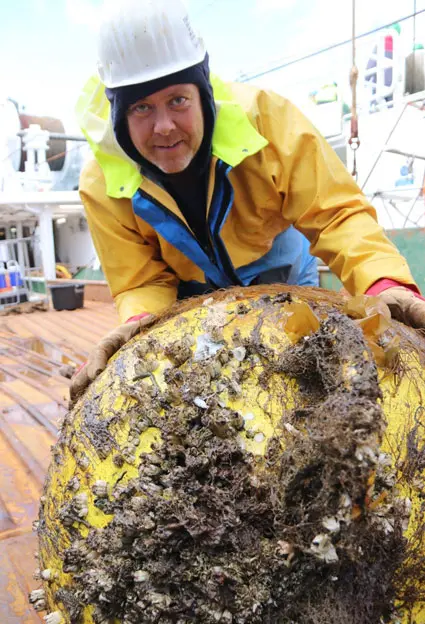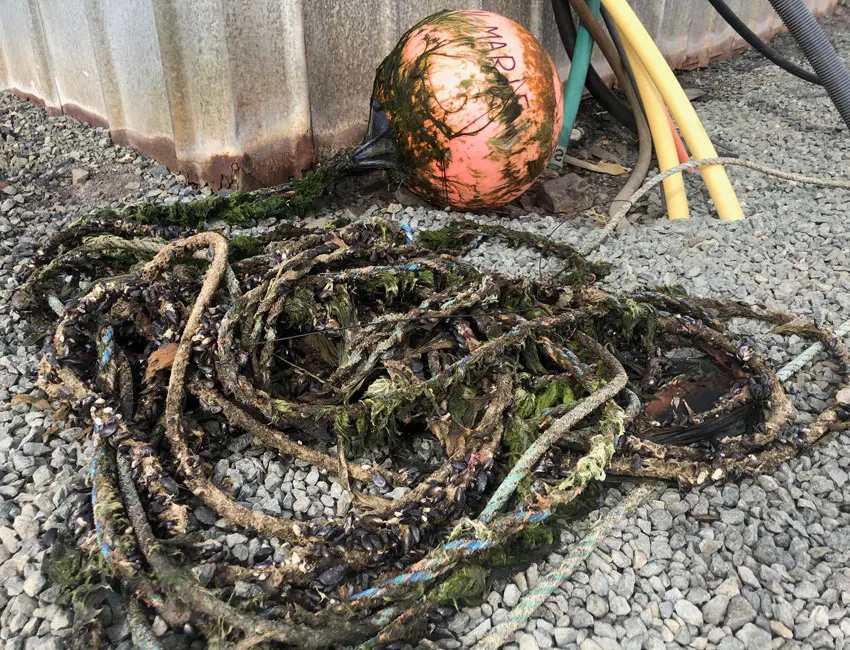A life in isolation

One of the two starfish that have lived their lives on the little yellow planet. Photo: Malin Daase (UiT).
Top image: One of the two starfish that have lived their lives on the little yellow planet. Photo: Malin Daase (UiT).
Most of us have in recent months experienced that life has changed, with perhaps isolation and quarantine, which can feel traumatic. At UNIS, all undergraduate students were encouraged to go home, teaching switched from on-campus to digital teaching and courses were cancelled. For a long time, all entry to Svalbard was closed. But some creatures keep on travelling, whether they want to or not. Others, once again, experience a more severe isolation than being stuck on an island for months.
27 July 2020
Text: Jørgen Berge (UiT The Arctic University of Norway and UNIS) and Rupert Krapp (UiT The Arctic University of Norway).
As part of a research project aimed at diurnal migration and biological clocks in the little copepod Calanus finmarchicus, a group of researchers from UiT has worked in Ramfjorden outside Tromsø since early 2019. Using regular collections of live C. finmarchicus, we have been able to take these back to the laboratory at the university and make measurements in a controlled environment to characterize their circadian rhythm.
But in order to relate this to migrations in the fjord and not least to the environmental variables (light, temperature, salinity, etc.) that help to control the circadian rhythm of these animals in nature, we have also had an ocean observatory standing in Ramfjorden. It has been anchored at a depth of 125 meters, with a wire up to a floating unit approximately 15 meters below sea level. Along the wire, we had placed several sensors and instruments that have made continuous measurements from the time we set up the observatory in March 2019 until it was retrieved in June this year.
When we were recently out with the research ship “Helmer Hanssen” to collect the observatory in Ramfjorden, my thoughts went in the direction of covid-19 and the situation we have all been in lately. For in the middle of the fjord, at a depth of about 15 meters, two small starfish lived together with many other trapped organisms. There is nothing special about organisms growing on underwater installations – all boat owners wage an annual battle against organisms that attach and grow on the underside of the boat over time. Also, at sea observatories, the sensors can often be covered by algae, wart barnacles, anemones and other organisms.
Thorson’s rule
But the sight of the two little starfish made me think of covid-19 and of an old biological “law” also called Thorson’s rule. These two starfish have in all probability arrived there as larvae and have since lived their entire lives in complete isolation. The vast majority of starfish have free-living larvae that live in the first weeks of their lives in the water masses, before settling on the seabed as small adults. The seabed these starfish found was a yellow metal ball in the middle of the ocean. Here they found a home and food and developed, from tiny larvae that settled on the metallic ball last summer.

This with free-living larvae in polar regions is something that has preoccupied biologists for a very long time, all the way back to the British explorer Sir James Clark Ross (1800-1862). Ross is today known for his expeditions in both the Arctic and the Antarctic and made early investigations of wildlife on the seabed both in the deep sea and in the polar regions. He registered many similarities between the organisms that live here and believed that there must therefore be a connection between the deep sea and the polar oceans.
This was later followed up by the Danish biologist Gunnar Thorson, who studied reproduction in benthic organisms in different oceans. Thorson thought he could recognize a definite and universal pattern: benthic organisms in tropical and temperate regions produce many small free-living eggs / larvae, while benthic organisms at higher latitudes and in the deep sea often produce few, large offspring without a free-living stage. This is referred to in the literature as Thorson’s rule, and was considered by some as late as the 1980s to be one of the only universally correct “rules” concerning the evolution and ecology of marine invertebrates. As we have gained better insight into and knowledge of the fauna of the Arctic, Antarctic and the deep sea, it turns out that such a general rule is not true, and Thorson’s rule is today a closed and outdated chapter.
Blue mussels in Svalbard
The two starfish on the yellow metal ball in the middle of the ocean are a good picture of this. Like most benthic organisms in tropical and temperate regions, free-living eggs and larvae are an important and widespread strategy for reproduction and dispersal, even at higher latitudes. Discovery of blue mussels in Svalbard are another good example of the same; It is today well documented that blue mussels have been common on Svalbard during warm periods for the last 10,000 years and as late as the Viking Age 1000 years ago. In modern times, and as a direct result of a general warming in the Arctic, blue mussels have again established themselves in Svalbard.
The dispersal mechanism for this re-establishment is assumed to be precisely free-living larvae that are transported north by ocean currents from the coast of northern Norway. We recently received a very good confirmation of this when a drifting buoy was picked up from the water outside Revneset, just across the airport in Longyearbyen.
Attached to the buoy was about 20m of rope covered with small mussels. It has only happened once before that a mass occurrence of blue mussel fry has been observed, which is most likely a result of a local spawning in Svalbard (in 2014). Contrary to what we concluded at that time, the blue mussels from Revneset are probably a very good example of the fjords on Svalbard being a kind of collection station for organisms that travel with the Gulf Stream northwards. In this case, it is about the marking of some crab stones set out by a fishing vessel on the Orkney Islands, most likely from this winter. The size of the mussels indicates that they have settled once in the spring, and then been passengers under the buoy that have been transported slowly but surely north and into Isfjorden. This goes against the current travel advice and ban on port calls in Svalbard!
As in the middle of a large cosmos, without contact with other species relatives, and as a result of starfish (and blue mussels) also having free-living larvae in the Arctic, the two starfish have lived their lives in isolation on their yellow, small, round planet of steel. Maybe there were more than these two who originally settled there. Maybe there were some unfortunate, or maybe adventurous, individuals who came too far out to the edge and fell from the small globe. The two who lived there when we picked up the observatory, on the other hand, have in all probability lived there all their lives. We hope they were good friends.
